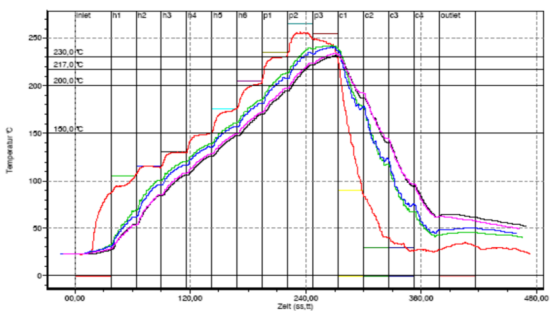Method for setting the temperature of lead-free reflow soldering
Release time:2023-10-26Publisher:Jeenoce
The temperature curve of lead-free reflow soldering refers to the curve of the temperature at the test point on the surface assembly device of a PCB over time. Therefore, the lead-free reflux temperature curve is an important factor in determining welding defects. Setting the temperature for lead-free reflow soldering is of utmost importance in the reflow soldering process. JEENOCE is here to share how to set the temperature for lead-free reflow soldering.

For lead-free solder paste, the temperature difference between components must be as small as possible. This can also be achieved by adjusting the reflow soldering temperature. Using traditional temperature curves, although the temperature difference between components is inevitable when the board forms a peak temperature, several methods can be used to reduce it:
1、 Extend preheating time. This greatly reduces the temperature difference between components before the peak reflux temperature is formed. Most convection reflux furnaces use this method. However, because the flux may evaporate too quickly through this method, it may cause poor wetting due to oxidation of the pins and pads.
2、 Increase the preheating temperature. The traditional preheating temperature is generally between 140~160 ° C, which may need to be increased to 170~190 ° C for lead-free solder. Increasing the preheating temperature reduces the required peak formation temperature, which in turn reduces the temperature difference between components (pads). If the flux cannot accept higher temperature levels, it will evaporate, causing poor melting humidity due to oxidation of the solder pad pins.
3、 Trapezoidal temperature curve (extended peak temperature). Extending the peak temperature time of small thermal capacity components will allow the components to reach the required reflux temperature with large thermal capacity components, avoiding overheating of smaller components.

